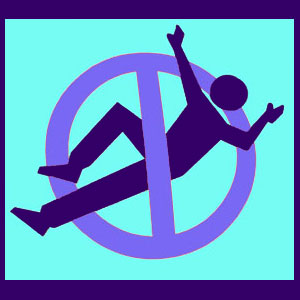
Slip and fall back pain is a topic immediately associated with civil litigation. It is certainly possible to hurt yourself if you fall down on a hard surface. If you were injured in a fall, filing a lawsuit may be the appropriate response. However, it is the goal of this article to detail some of the lesser known aspects of slip and fall accidents as they relate to personal injury lawsuits and recovering from back pain. In this matter, I am extremely well versed, since not only am I a back pain sufferer for decades, but I am also a retired trial preparation investigator in New York City, which features one of the busiest court systems in the world.
This discussion focuses attention on the occurrence of chronic back pain resulting from a slip and fall injury.
Slip and Fall Back Pain Occurrence
When a person falls down, pain is likely to occur. Sometimes, this pain is immediate and severe, but many times it is what is known as delayed onset pain. In these cases, the fallen person will typically get up and seem fine, but then suffer gradual or sudden symptoms at some other time, a few hours to a few days later.
Regardless of when the symptoms begin, they will almost surely be linked to the recent fall. In most cases, diagnostic imaging will be performed to scan for injuries and it is extremely likely that herniated discs or other spinal abnormalities will be located. Of course, these will also be attributed to the fall occurrence, although this may be an incorrect assumption.
Slip and Fall Consequences
Pain can occur from trauma, but resolves almost without exception. The ability to heal quickly and completely is an inherent miracle of the human anatomy. With virtually every type of bodily injury, this process is trusted and taken for granted. However, with back injury, this common knowledge is basically tossed out the window, since most dorsopathy concerns grow far beyond the structural issues blamed for sourcing them.
There is no reason to think that the pain would still be there weeks, months or years after a slip and fall incident. Far more likely, is the possibility that the pain is being perpetuated by the mindbody process. However, this can occur from many different reasons.
Slip and Fall Back Pain Causes
Injuries generally heal. Lasting pain blamed on a slip and fall may stick around due to several main reasons:
Primary gain theory states that the person is predisposed to chronic pain by their very personality, or life circumstances, and the psychosomatic back pain process takes advantage of the fall opportunity to create convincing symptoms.
Secondary gain theory states that the benefits of litigation ($$$) are enough to actually make the person continue to experience pain. Other reasons for secondary gain include the ability to stop working or avoid responsibility. This can be insulting as an accusation, but does happen in some rare patients.
Nocebo effect is always a contributing factor to post-traumatic pain, especially if a significant structural diagnosis is presented.
Slip and Fall Back Pain Tips
Here are some words of wisdom for people who have been hurt in a slip and fall and the back doctors who treat them:
First, some disc conditions and other spinal abnormalities attributed to slip and falls were already there. They never caused pain and the degenerative changes present may date them as being in existence prior to the fall. This is rarely considered.
Doctors must not frighten patients with talk of permanent injury. This is a mostly fantastic premise and doctors who take part in psychological warfare costing patients their health via the nocebo effect should be prosecuted to the fullest extent of the law.
Patients are advised to be careful about buying into your lawyer’s game plan to make you rich. They only want to make themselves rich and will do so at the cost of your health… now and forever. It is not worth the money; trust me.
I sincerely advise you to read all about back injury lawsuits and back injury lawyers before doing anything after a slip and fall trauma.





